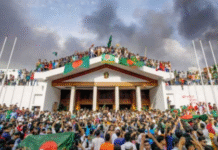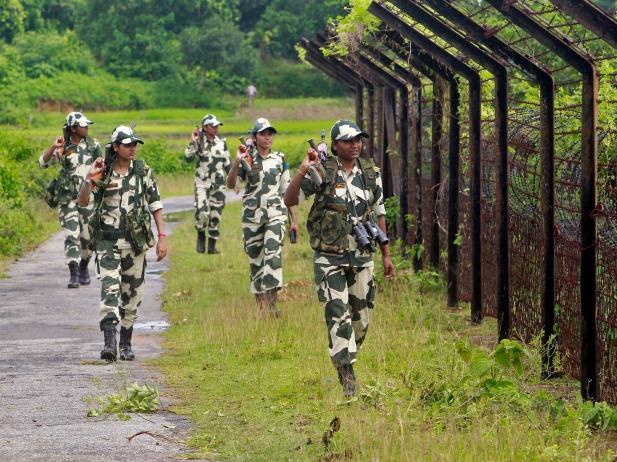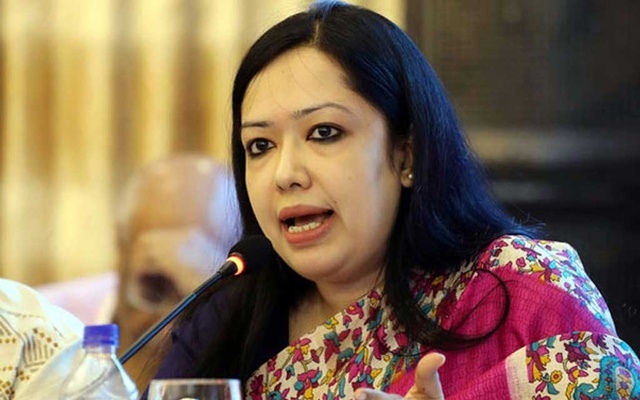
THE implications of strained border relations extend beyond politics. Border communities bear the brunt of these tensions, with disrupted livelihoods and lost lives, writes Imran Hossain
THE Bangladesh-India border has always been more than just a physical demarcation. It is a complex intersection of history, culture, and shared livelihoods. Yet, in recent months, this boundary has increasingly become a flashpoint for disputes, threatening the hard-won equilibrium between the two neighbours. For both nations, the stakes are high — economically, politically, and socially. For the people living along the border, it is not just a geopolitical issue; it is about their homes, lands and future.
Fences and fractures
INDIA’S move to construct barbed wire fencing along multiple segments of the border has sparked anger and concern in Bangladesh. These actions violate the 1975 Memorandum of Understanding, which prohibits development within 150 yards of the zero line without mutual consent. While India argues that fencing is necessary to curb smuggling and unauthorised migration, the perspective from Dhaka is starkly different. Many Bangladeshis see it as a challenge to sovereignty and an erosion of trust. Resistance to the fencing — from Lalmonirhat to Chapainawabganj — has been mounting among Bangladesh’s Border Guard and local communities.
Even within India, the border fence remains a divisive topic. Critics, including former diplomats and academics, argue that it undermines the spirit of friendship and cooperation essential to Indo-Bangladeshi relations. The irony of promoting bilateral ties while building physical barriers has not gone unnoticed. While supporters claim the fence has reduced illegal activities, these arguments often ignore the human cost of division.
To grasp the current tensions, one must revisit the historical context of the border. The 1947 partition, which created East Pakistan (now Bangladesh), laid the foundation for today’s disputes. The hastily drawn Radcliffe Line left unresolved territorial claims and enclaves that remained contentious for decades. The 2015 land boundary agreement marked a significant milestone, resolving enclave issues and clarifying territorial boundaries. However, the agreement also highlighted the power imbalance between the nations, leaving many in Bangladesh feeling sidelined by India’s strategic priorities.
India’s domestic politics have further complicated the situation. The Bharatiya Janata Party has used border security as a platform to amplify nationalist rhetoric. Visits by BJP lawmakers to fencing sites and interactions with the Border Security Force are not just about strengthening security — they also stoke nationalist fervour. For Bangladesh, this political narrative has added new layers of tension. India’s focus on ‘securing the border’ often leaves Bangladesh feeling scapegoated for internal political gain. While nationalist rhetoric may win votes, its long-term impact on bilateral ties could be deeply damaging.
Cost of conflict
THE implications of strained border relations extend beyond politics. Border communities bear the brunt of these tensions, with disrupted livelihoods and lost lives. Farmers worry about losing access to land, traders face increased scrutiny, and families mourn loved ones killed in cross-border violence. Incidents like the tragic death of Felani Khatun in 2011 remain powerful reminders of the human toll.
Beyond the emotional and physical cost, economic fallout is a growing concern. Bilateral trade, valued at billions annually, risks being undermined by diplomatic discord. The psychological burden on border residents caught in the middle of these disputes is equally devastating.
Pathways to peace
RESOLVING these tensions requires diplomacy, cooperation, and community engagement. First, high-level dialogues must be prioritised to address immediate concerns and rebuild trust. Both nations need to reaffirm their commitment to existing agreements and create mechanisms to prevent future violations.
Second, fostering collaboration between the Border Guard Bangladesh and the Indian Border Security Force is vital. Regular communication, joint patrols, and training exercises can build confidence and reduce misunderstandings.
Third, the voices of border communities must be heard. Awareness campaigns and conflict resolution programmes can empower residents to mediate tensions and foster cooperation. Addressing unclear territorial demarcations through joint surveys and committees could also resolve long-standing disputes.
Finally, political leaders on both sides must exercise restraint in using border issues as a tool for electoral gains. True security stems not from fences or rhetoric but from mutual respect and collaboration.
While historical disputes and current tensions have tested relations, the potential for cooperation remains immense. By focusing on equitable policies and community-driven approaches, both nations can transform the border from a source of division into a gateway for shared prosperity. The time for action is now — for the millions whose lives depend on peace and stability along this vital frontier.
Imran Hossain is a lecturer in business administration at the Rabindra Maitree University.









